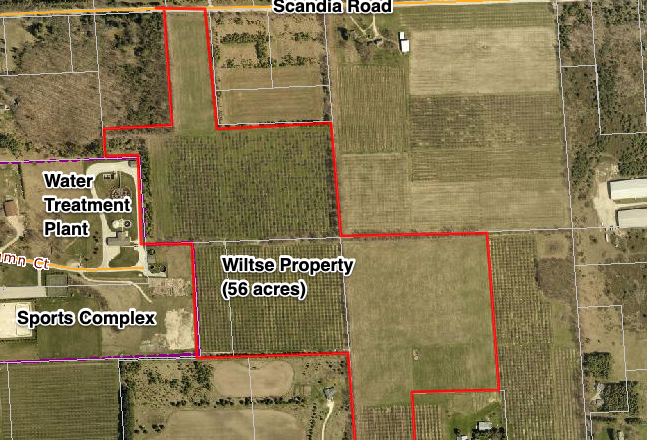A Plan for Progress: Sister Bay Embarks on 5-Year Improvement Plan
- Share
- Tweet
- Pin
- Share

A look at the three biggest projects Sister Bay has identified for the next five years
In late September, the Sister Bay Village Board approved its first formal Capital Improvement Plan (CIP). The plan, which will be updated annually, identified projects the village has in store for the next five years.
Tasha Rass, village finance director, said the benefit of having a CIP is that the village can now adequately plan for larger projects, understanding that projects and their related plans and budgets are fluid until they’re formally adopted as part of that particular year’s budget.
One example is the $5.5 million project for a new government building that the village has slated for 2025.
“By including it in a CIP with a five-year outlook, we can look at this project, and, if we’re serious about it, we can start making plans,” she said. “All of these projects take time to plan. If we look only one year ahead, we either aren’t going to have a plan or we aren’t going to have the funding.”
Details on that government building project and two of the other bigger-ticket items listed on the CIP for the next five years are outlined below.
2022: $700,000 for Streets
Next year, $200,000 has been allocated for road improvements, with an additional $500,000 designated for extensions of Cherrywood Lane and Northwoods Drive.
This project would include storm sewer, water, sewer, paving and sidewalks for an extension of Cherrywood Lane and Northwoods Drive to support Mosaic Ventures’ housing development, a 45-unit affordable-housing project located south of Northern Door Children’s Center.
The project was originally budgeted to be funded by revenue generated from the village’s Premier Resort Area Tax (PRAT), Rass said, but an unexpected surplus in TIF revenue prompted the village to reallocate the PRAT funds to the general road-maintenance category instead.
In addition to regular scheduled milling, repaving and other road maintenance, a portion of that $200,000 will also be used to improve the village’s section of Woodcrest Road. Although the details of the improvements to Woodcrest still need to be finalized, Rass said they are scheduled to take place in 2022 and could involve widening the shoulder to more safely accommodate bicycle traffic.
As an advocate for bike-friendly roads, village trustee Nate Bell believes that would be a step in the right direction for the village.
“My belief is as we do infrastructure improvements, it is important to consider all modes of transportation: vehicles, pedestrians, cyclists, everyone,” he said. “We also need to look beyond just the next few years. When you redo a road, you should be looking at it from a 20-year perspective.”
2024: $1.4 Million for a New Ice Rink Project
The CIP includes the potential for $1.4 million for improvements to the Teresa K. Highlander Community Ice Rink. That is based on the recommendation of the ad hoc Ice Rink Committee in May.
That committee recommended installing a new concrete pad with cooling coils that would guarantee an ice surface from mid-November through early March, said Myles Dannhausen Jr, a member of the committee.
That would cost an estimated $850,000 for coils and a new concrete pad, and $550,000 for a refrigeration system. Dannhausen Jr. said the slope of the existing surface makes it difficult to maintain ice and is entirely weather-dependent.
Dannhausen said the aim is to fund the project substantially through private donations.
“We want to make it more of a centerpiece of Door County in the winter,” Dannhausen said.
Rass explained that the budgeted figures are just estimates based on the research provided from the ad hoc committee. Final funding will be a combination of village funds and fundraising efforts.
2025: $5.5 Million for General Government and Administration
A project for a new government building and post office building had been considered for 2023 on an earlier draft of the plan. The final plan is to consider the project in 2025. The estimated cost is $5 million for the new government building and $500,000 for the post office building.
“It was pushed off [to 2025] because we want a little more time to plan what we want for the building, as well for the Wiltse property,” Rass said. “We want to do this right.”
Relocating the administrative operations came up in July during discussions about potential uses for the 56-acre Wiltse property that the village had purchased last year. The move would help solve some of the challenges with the current administrative office space, including heating, cooling and electrical issues; a lack of voting and meeting spaces; and a need for additional storage areas.
“It’s also a logistical issue,” Rass said. “Right now, we have departments in four different buildings. This would consolidate some of us and allow us to work together and meet more often.”
The move would also free up space in the downtown area, although Rass said there are no concrete plans at this time for what would happen to the existing administrative office building or parks property.Discussions about the new post office building are still in the preliminary stages with no set plans.


